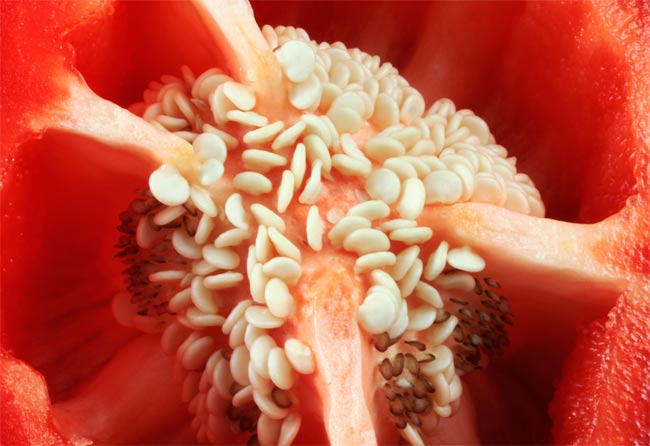New 'Thermometer' for Chili Peppers

Testing the hotness of a habanero chili pepper just went digital.
A team of chemists has developed a mathematical computer model to measure the "heat" inside a chili pepper, a process that could provide quicker and cheaper information to certain food and drug industries. For instance, some arthritis medications contain chemicals from hot peppers.
Peppers get their hotness from a family of chemicals called capsaicinoids, with two members (capsaicin and dihydrocapsaicin) of the group making up 90 percent of the capsaicinoids.
The spiciness of each pepper depends on the relative amounts of these hot compounds hidden inside the pepper's flesh.
“Capsaicinoids are the active ingredient in pepper spray, tear gas and some arthritis medications, not to mention spices and foods like salsa, so a wide range of industries could find this new approach useful,” said lead scientist Kenneth Busch, a chemist at Baylor University in Texas.
Currently, the standard test of pepper hotness relies on a process called high-performance liquid chromatography. This method is expensive and time consuming (each sample can take 10 minutes to run), because the machine chemically separates all the different compounds before spitting out a reading.
Busch and his colleagues developed a computer model that can calculate the hotness of a pepper based on information gleaned from spectroscopy, which measures how a substance absorbs light. The program is set up so that when a scientist feeds a "spectra" into it, the program disregards components uninvolved in spicy heat and focuses only on the capsaicinoid factors.
Get the world’s most fascinating discoveries delivered straight to your inbox.
The research will be published in an upcoming issue of the Journal of Agricultural and Food Chemistry.
- Why do Chili Peppers Taste Hot?
- Ancient Crumbs Reveal History of Chili Peppers
- Top 10 Good Food Gone Bad
Jeanna Bryner is managing editor of Scientific American. Previously she was editor in chief of Live Science and, prior to that, an editor at Scholastic's Science World magazine. Bryner has an English degree from Salisbury University, a master's degree in biogeochemistry and environmental sciences from the University of Maryland and a graduate science journalism degree from New York University. She has worked as a biologist in Florida, where she monitored wetlands and did field surveys for endangered species, including the gorgeous Florida Scrub Jay. She also received an ocean sciences journalism fellowship from the Woods Hole Oceanographic Institution. She is a firm believer that science is for everyone and that just about everything can be viewed through the lens of science.


